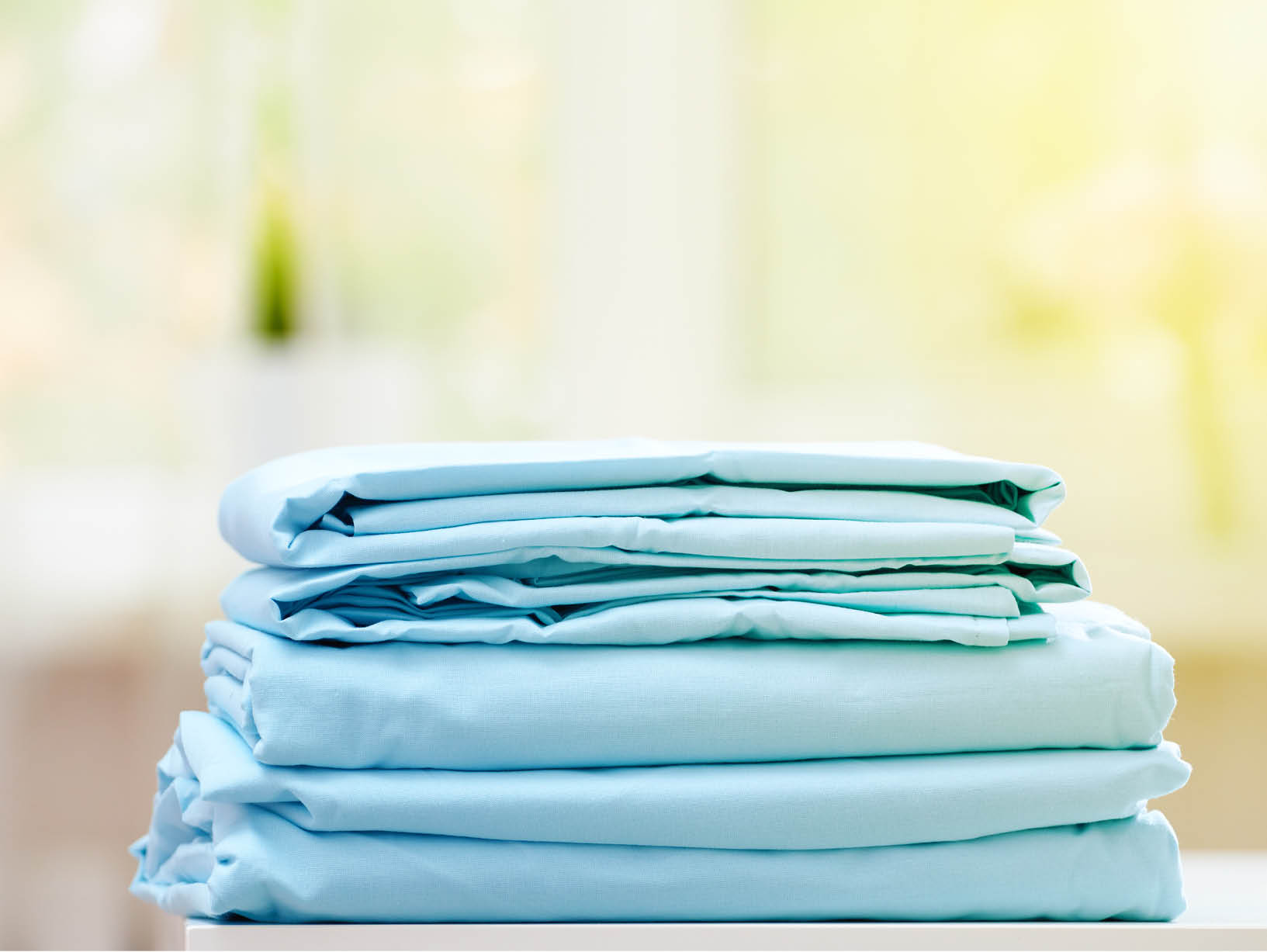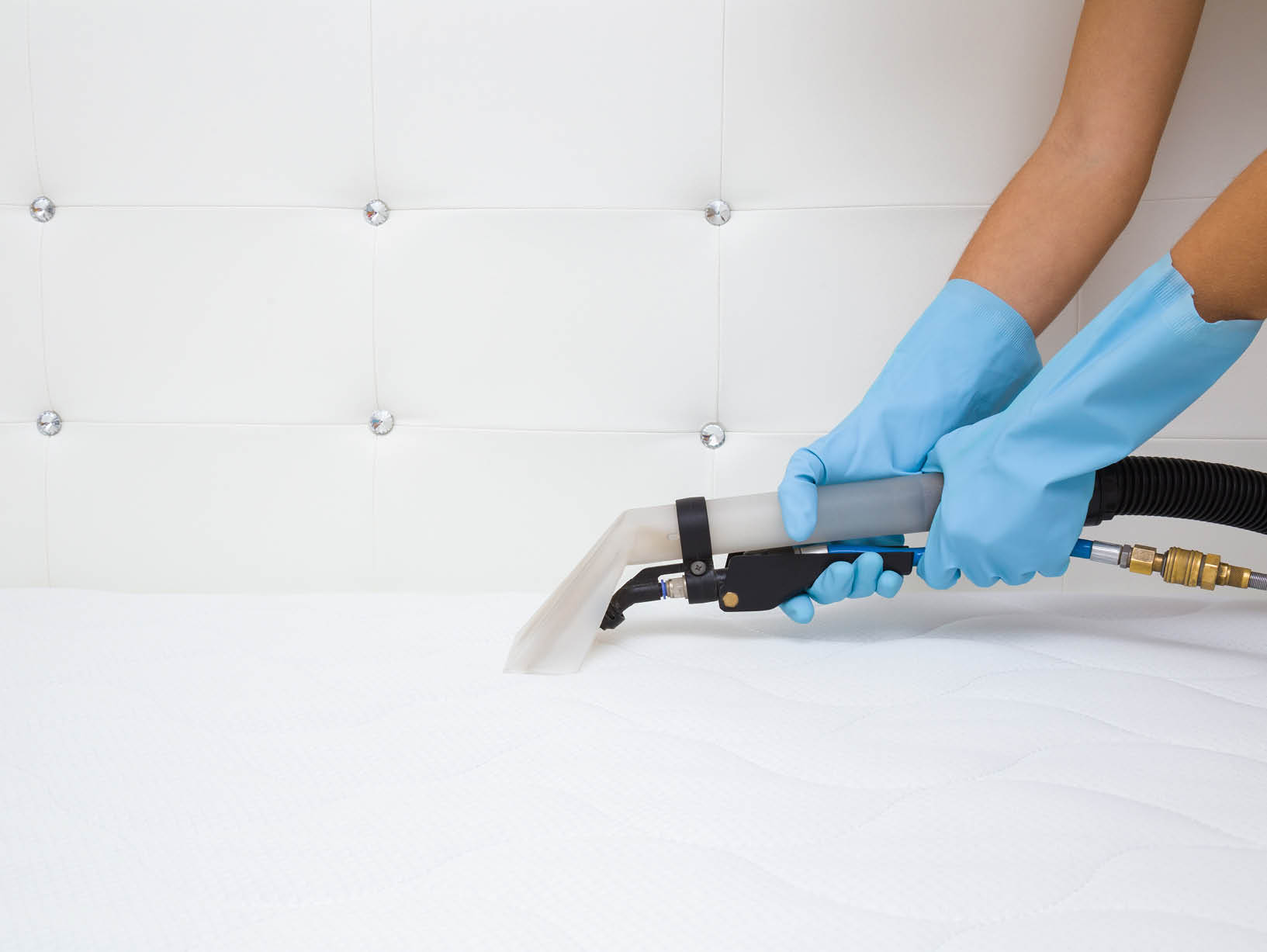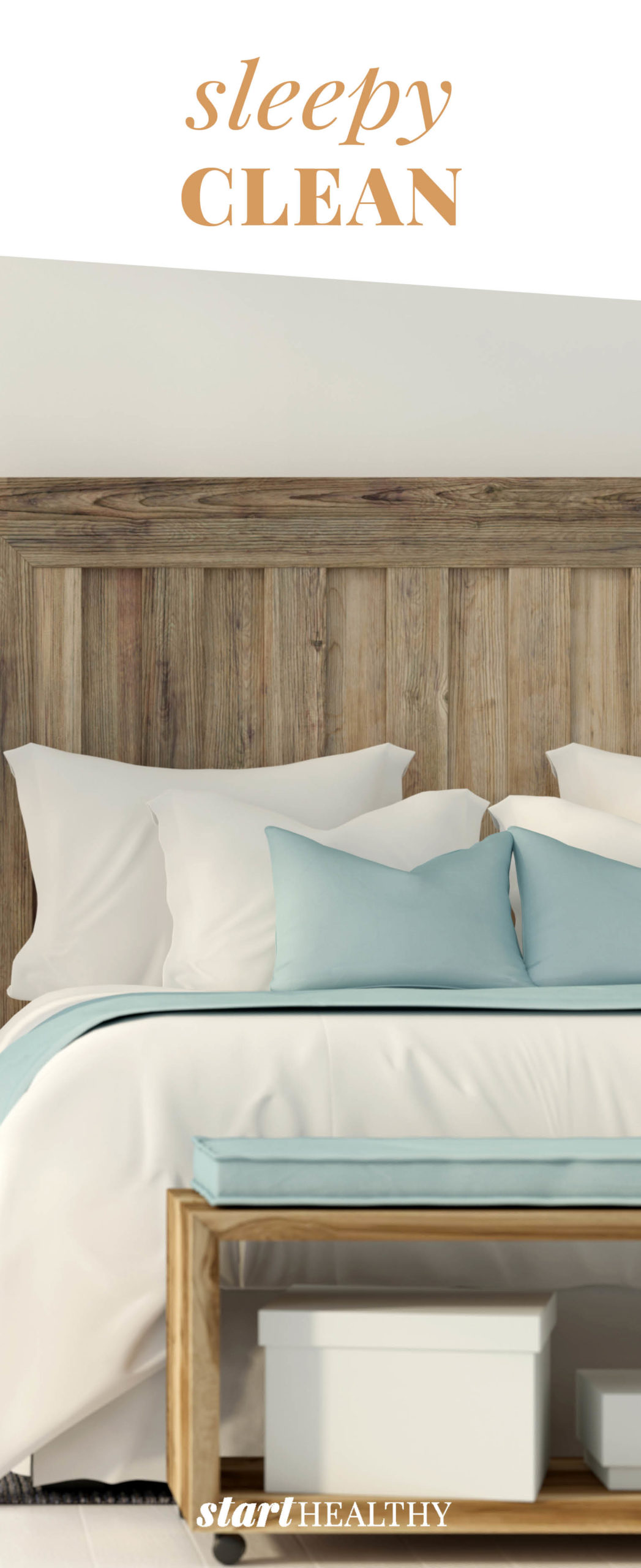Sleepy Clean
There are many areas of your home that you clean every week, some perhaps every day, because of how frequently they are used. The bathroom sink, kitchen floor and countertops, and living room floor are probably some of the most frequently cleaned areas. However, there is another room that you probably spend the most time in but don’t think about cleaning nearly as often: your bedroom.
But it’s not just your room that deserves a good cleaning. According to a 2019 study, most Americans spend nearly half of their lives in bed. This fact might not be that surprising. After all, if you’re getting the proper amount
of sleep, you should be spending a lot of time in bed. However, if you are not cleaning your bed as often as you should, it can become a health hazard instead of a place to relax and recharge.
So, how often should you give your bed a good cleaning? And what does a proper cleaning entail?
FROM TOP TO BOTTOM
Maybe you’re in the category of people who remember to wash their sheets often. But there are still so many other pieces of your bed to consider. You wouldn’t only brush half of your hair or wash half of your face, would you? The same concept applies to your bed.

Sheets
Washing your sheets should still be a top priority, as it’s one of the easiest steps you can take for a clean bed. Sleep Advisor recommends washing your sheets—that includes top sheets, fitted sheets, and pillowcases—every one to two weeks. If you have allergies, make it once a week. Your body is coming into direct contact with these surfaces, meaning they get dirty a lot faster than other parts of your bed.
Be sure to read the label on your sheets to make sure you’re washing them properly. Most can be washed and dried at home, but some fabrics may require special care. Wash with the hottest water possible, as hot water is best at eliminating bacteria. You should also store freshly washed sheets in a cool, dry place.

Comforter
Depending on its size and material, your comforter may not be as easy to launder as your sheets, but it’s still an important piece to keep clean. Comforters and throw blankets should be washed once every three to four months or once every season. Duvet covers, however, should be washed every few weeks.
If possible, it’s best to wash comforters in larger, commercial dryers (which can be found at your local laundromat) so you don’t deteriorate or compromise the filler material. It’s best to wash on a delicate cycle, but be sure to read the label for exact care instructions. Using dryer balls can also help keep your comforter fluffy. In between washes, you can run your comforter through the dryer on high heat (if the label allows) to help combat bacteria.

Pillows
It’s not just pillow cases that need cleaning—your pillows can also hold on to bacteria, too, which can eventually lead to health problems. A good rule of thumb is to replace your pillows entirely every one to two years and to wash your current pillows once every four months.
Pillows can be particularly challenging to wash. For example, if you wash a down pillow on the wrong setting, you could end up with a feathery mess. Most pillows can be washed on a gentle cycle with warm water. Tumble drying on low heat is best, and, similarly to your comforter, dryer balls can be used to maintain fluffiness. Foam pillows should not be washed, but they can be spot-cleaned with mild soap or even vacuumed. To dry your pillows, tumble dry with no heat or let them air-dry.

Mattress
Your mattress is perhaps the longest-lasting component of your bed, though it does need replacing eventually. You don’t necessarily need to clean your mattress very often; twice a year should suffice. However, it is a good idea to clean it more often if you are particularly prone to allergies or if you allow your pet to sleep with you.
There are a few different ways to give your mattress a thorough cleaning, but the steps below are among the safest (and most efficient) options:
- Remove all sheets and coverings from your mattress, including mattress covers or protectors.
- Use your vacuum’s upholstery attachment to vacuum the top and sides of your mattress. If there are any visible stains, spot-treat with a mixture of peroxide, baking soda, and a small amount of liquid detergent. This can be applied via a spray bottle or on a damp towel. For an all-natural alternative, mix together lemon juice and salt, and apply to the stain.
- Follow up with a thin sprinkle of baking soda over the top of your entire mattress to absorb oil and odors. Allow this to sit for at least a few hours, preferably outside in direct sunlight. Bonus: UV light is a natural bacteria killer!
- After a few hours, vacuum off the remaining baking soda, and consider purchasing a mattress cover (if you don’t already have one) for added protection in the future.
Clean Bed = Healthier You
Although a clean bed is not a direct contributor to a better night of sleep, it can help tremendously in making sure your sleeping environment contributes to optimal relaxation. Who wants to put their head on their pillow at night knowing it hasn’t been washed in years?
You lie on your bed for hours every day, inevitably leaving behind the natural dirt, oil, and bacteria that accumulate on your skin throughout the day, along with dust, pet dander, and other allergens. While it’s an easy part of your cleaning routine to overlook, in the grand scheme of things, keeping your bed clean doesn’t take that much time or effort, and the health benefits are tremendous.
For more info, visit sleepadvisor.org









